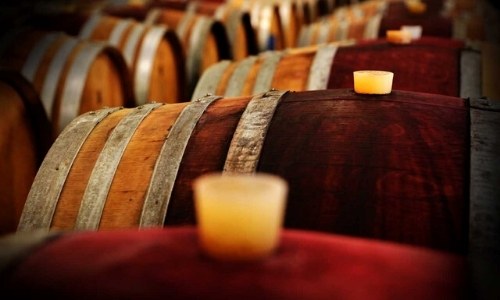
Why is the wine aged in wood? Discover the types of wines that refine in wood, the impact of wood on wine, the types of wooden containers such as Barriques, Tonneaux, Large barrels and Caratelli. You will also find information on the odorous molecules given to wine by aging in wood and the types of wood with the various most important production areas. To learn more, discover the good practices of aging wine in wood, how the barriques are produced and the cost of the barriques.
- Wine Aging in Wood – Origins and Causes
- Barrique, Tonneaux, Big Barrels, Caratelli
- Odorous molecules released from wood
- Types of wood used and production areas
- Wine aging practices in wood
- Come si producono the barrels?
- Cost of barriques
Aging of the wine in wood

What are the origins in the history of the aging of wine in wood? Wood is the oldest material used for storing and refining wine, second only to terracotta. Throughout history, wooden barrels were used primarily by the Gauls only to be discovered and adopted by the Romans.
The latter were impressed by the quality of the wine that came out of the use of wood, as well as by the convenience in transporting the barrels. Today, most of the high quality wines from around the world are aged in wooden containers before being bottled. The aging in wood is in fact able to positively influence all the organoleptic characteristics of the wine, from the color, to the aromas, to the taste.
Find out in this article why wood is used to refine wine, the differences between the various types of wood and the various containers such as barriques, tonneaux, large barrels and kegs. But also the odorous molecules transferred to the wine, the good practices for aging wine in wood, where and how the barriques are produced.
What types of wine can be aged in wood?
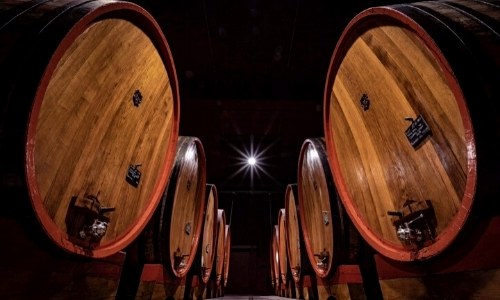
Before asking why wine is aged in wooden containers, it is good to ask: can all wines be aged in wood? Theoretically all types of wine (red, white and rarely rosé) can be aged in wood, but the wine must have adequate characteristics that protect it during aging.
High alcohol content, good acidity and an important polyphenolic outfit are the three sine qua non conditions for aging a wine in wood for long years, as well as in other containers.
The aging time of the wine in wood generally varies from 12 to 48 months depending on the desired result; for some types of wine the aging time in wood is instead imposed by the wine production disciplinary.
A very prolonged stop in wood is generally adopted for red wines with greater structure and more suited to aging: Barolo, Brunello di Montalcino or the great red wines of Bordeaux are some of the most suitable wines to withstand long years of aging in wood.
Why age wine in wood?
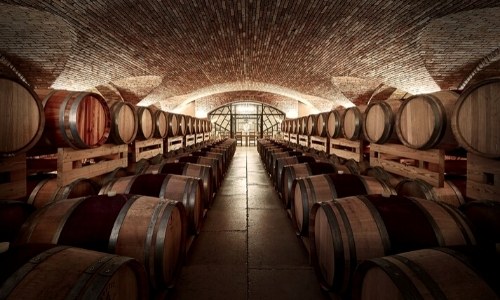
So we come to why choose wood as a material to refine wine. The reasons why the wine is aged in wood are essentially two.
The first reason is that wood is a porous material. Unlike steel, therefore, it allows a slow and gradual gas exchange with the outside. It is precisely this passage of oxygen that allows the wine to evolve: proper oxygenation stabilizes the color of the wine and softens its roughness, decreasing the astringency of the tannins.
The second reason why wood is used to refine wine is the transfer of tertiary aromas. In fact, wood (unlike steel) is not an inert material: the toasting of the wood has a more or less incisive aromatic impact on the wine.
The aromatic impact of wood on wine varies depending on the aging time of the wine in wood, depending on whether a new or used wooden container is used, depending on the surface of the wine in contact with the wood and the degree of toasting of the wood used.
A light roasting will tend to impart notes of sweet spices such as almonds and cloves, a medium roast with notes of vanilla and white chocolate, a strong roasting stamps of tobacco, roasting and smoky.
In the following paragraphs, we will explore the organoleptic impact and the odorous molecules released from the wood to the wine in the aging phase.
The wood also gives the wine tannic compounds (ellagic tannins) which influence its taste, making it softer and more enveloping.
Now let’s see which are the most used containers for aging wine in wood and their peculiarities.
Wine Aging in Barrique
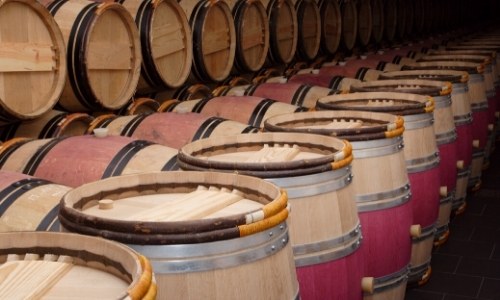
What are barriques and what impact do they have on wine aging? Barriques are small wooden barrels of French origin, very popular all over the world for the aging of wine in wood, but also of cognac or port. The most used are the barriques with a capacity of 225 liters (Bordeaux barriques) or 228 liters (Burgundy pièces).
The barriques have a fairly marked organoleptic impact on the wine. The first reason is their reduced capacity. Compared to large barrels, in fact, the amount of wine in contact with the surface of the wood is in greater proportion, and therefore there will be greater oxygenation and release of aromatic and polyphenolic compounds.
The organoleptic impact of wine aging in barriques is more incisive than in barrels also for another important reason: toasting. In fact, the barriques have a more or less marked toasting that greatly affects the aroma of the wine, enriching it with tertiary aromas of spices, toasted notes and roasting aromas.
Furthermore, in the refinement of wine in barriques, depending on whether new or second or third passage barriques are used, the aromatic impact will be more or less evident.
Wine Aging in Tonneau
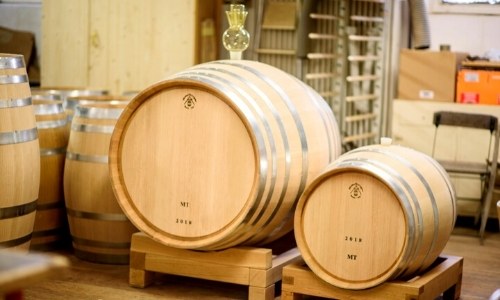
What are tonneaux and what impact do they have on wine aging? The name tonneau derives from the Latin tunna, meaning container. Widespread already in Roman times, tonneaux are wooden containers that are placed halfway between barriques and barrels: in fact, they usually have a capacity of about 400/800 liters. In Italy, 500-liter tonneaux are very popular.
In tonneaxes, oxygenation is slower and the impact on the aromatic and polyphenolic content of the wine is less evident than in barriques.
Wine Aging in Big Barrels
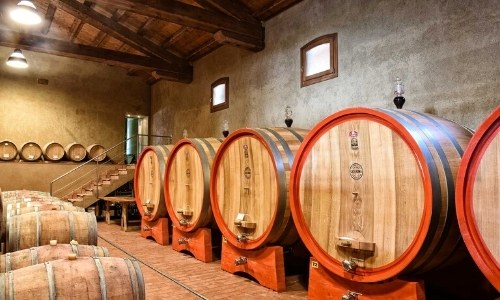
What are large barrels and what impact do they have on wine aging? The wooden barrels used for the aging of wine can have a very varied capacity, but generally contain from 10 to 50 hectoliters of wine.
Large barrels are containers widely used all over the world as they have a very limited organoleptic impact on wine compared to French barriques.
The large size (and therefore the smaller surface of wine in contact with the wood), the greater thickness of the staves and, often, the absence of toasting allows the wine to preserve its original characteristics. This allows the wine to age while maintaining the typical character of the vines and their territorial expression.
Large barrels also have a longer life: if used correctly, they can be reused for decades.
Aging of the wine in Caratelli
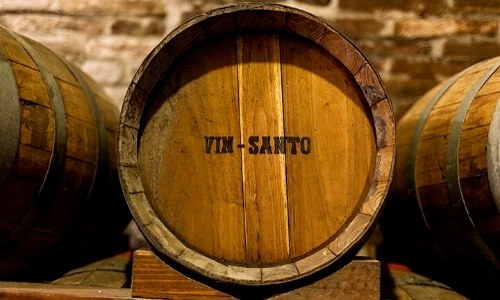
What are the Caratelli? The Caratelli are small wooden wine vessels (traditionally chestnut or alternatively oak) with a variable capacity generally between 25 and 50 liters.
The origin of the name caratello is traced back to the Latin word carratum, a type of small barrel that was used to transport wine on wagons in medieval times.
Caratelli are very popular in Tuscany for the production of Vin Santo. The Tuscan Vin Santo is aged in Caratelli for long periods, often between 3 and 7 years but which can also go up to 20. This long aging in Caratello wood exposed to seasonal temperature variations allows to obtain meditation wines with aromas elegant, ethereal and with an oxidative character. The caratelli are also used in Modena, for the production of IGP balsamic vinegar.
Odorous molecules released from wood
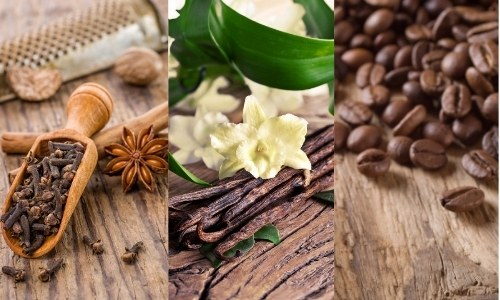
What are the odorous molecules that wine acquires thanks to aging in wood? The aromas released by the wood during the aging of the wine are innumerable and are the result of an extraction process.
These odorous molecules vary depending on various factors. These may affect the degree of use of wood (first, second or third passage), the type of wood used, the type of toasting (light, medium, strong), the size and aging time of the wine in the wooden container. .
Let’s find out the main aromatic compounds with the associated flavor descriptors. To learn more, also discover the article dedicated to wine aromas.
| FAMIGLIA | COMPOSTI | DESCRITTORI | THRESHOLD |
| Lattoni | cis-whiskylactone | Coconut | 790 μg/l |
| – | trans-whisky lattoni | 67 μg/l | |
| Aldeidi fenoliche | vanilline | Vanilla | 995 μg/l |
| – | methyl vanillate | Vanilla | 3000 μg/l |
| – | ethyl-vanillate | Vanilla | 990 μg/l |
| – | syringaldehyde | Woody | 50000 μg/l |
| Fenilacetone | apocynin | Vanilla | 1000 μg/l |
| – | Propiovanillone | Boisé | – |
| – | Siringolo | Spicy | 1800 μg/l |
| Fenoli | eugenol | Cloves | 6 μg/l |
| – | gaiacolo | Smoky | 10 μg/l |
| – | 4-methyl-gaiacol | Smoky | – |
| – | 4-ethyl-gaiacol | Black Pepper | 100 μg/l |
| – | 4-vinyl-gaiacol | Cloves | 1100 μg/l |
| – | 4-ethyl-phenol | Leather | 500 μg/l |
| – | 4-vinyl-phenol | Erthy | 180 μg/l |
| – | Phenols | China | – |
| – | Cresolo | Prodotti farmaceutici | 31-58 μg/l |
| Composti tostati | Furfurale | Toasted Almond | 3000 μg/l |
| – | Methyl-5-furfural | Toasted Almond | |
| – | Cyclotene | Toasted Bread | 3100 μg/l |
| – | Maltolo | Smoky | 11400 μg/l |
| Aldeide Furanica | Furfurylthiolo | Coffee | 1 ng/l |
Types of wood used and production areas
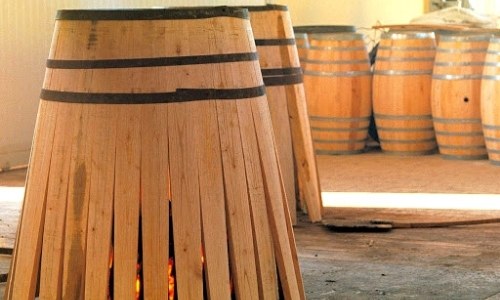
The wood most used for the production of barrels and barriques is oak, a semi-deciduous oak belonging to the Fagaceae family. France is the first producer of oak for the aging of wine. The most valuable oak is in fact the oak from the French forests of Allier, Nerves, Limousin, Volgi and the Loire Valley.
Followed by Slavonia, in eastern Croatia, and the United States (Pennsylvania and Minnesota). Depending on the origin of the oak, the odorous molecules transferred to the wine will be different, and sometimes it will be possible to guess the origin only by smelling the contents of the glass.
For example, French oak, rich in eugenol and vanillin, yields typical woody notes of cloves and vanilla. The American oak, rich in whiskey lactones, is instead recognizable by the strong note of coconut.
However, oak is not the only wood used for refining wine: chestnut, cherry, acacia and ash wood are very common (especially for the production of large barrels). Indeed, many producers prefer the use of local wood, for an economic, practical and / or ethical factor.
Wine aging practices in wood
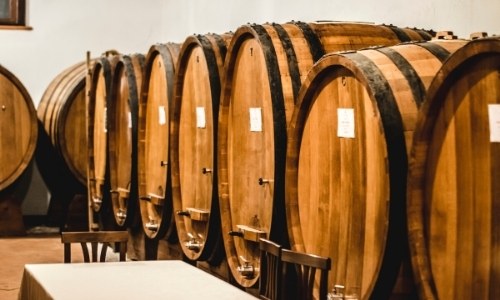
The fundamental rule for a smooth aging of wine in wood – as indeed for any other cellar practice – is correct hygiene.
If not properly cleaned, wood easily transforms into a microbiological niche in which harmful bacteria and yeasts, such as Brettanomyces Bruxellensis, can develop. It is therefore of fundamental importance to sanitize the wooden containers properly and on time (high pressure hot water is sufficient).
The second rule is to never leave the container full, to avoid the proliferation of acetic bacteria, and then re-fill it periodically since the mass inside is susceptible to volume fluctuations. The third rule: to taste. Taste and periodically check the aging wine to make sure that everything goes in the best way.
Come si producono the barrels?
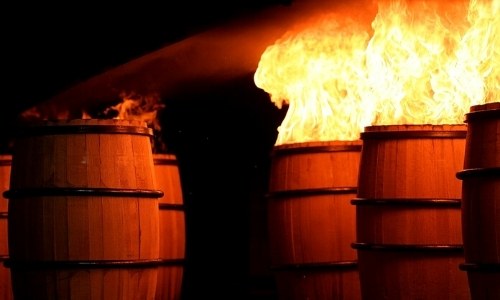
A barriques is made up of 25-30 wooden slats, joined together by iron circles. But how are the barriques produced?
Once the wood has been cut (cut or split), it is subjected to seasoning in the open air for a minimum of 24 months: during this phase the wood dries up and loses the most unpleasant and unripe tannins.
Once seasoned, the wood is cut into staves which are then heated to increase their elasticity and assembled one by one on an iron assembly circle.
At this point the barrique is ready to be toasted around a flame at 150-200 ° C for a different time depending on the desired degree of toasting (light, medium or strong).
During this phase the curvature of the wood is fixed, the phenolic heritage of the wood is semi-degraded and the barrique takes on the classic toasted notes.
Finally, the bottom of the barrique is fixed and the thickness between the staves is then filled with reed filaments – or other natural fibers – to guarantee its tightness and transpiration. The barriques are ready and all that remains is to check the seal with boiling water.
Cost of barriques
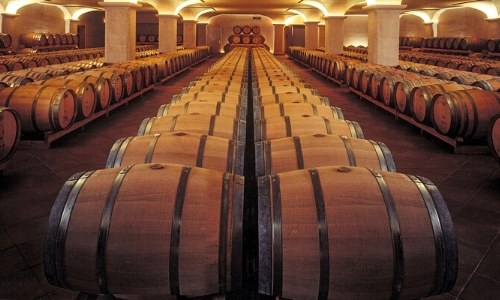
What is the cost of the Barriques? The purchase price of a new 225-liter oak barrel normally fluctuates between 400 and 900 euros, depending on the origin of the wood used, the producers and the degree of toasting.





